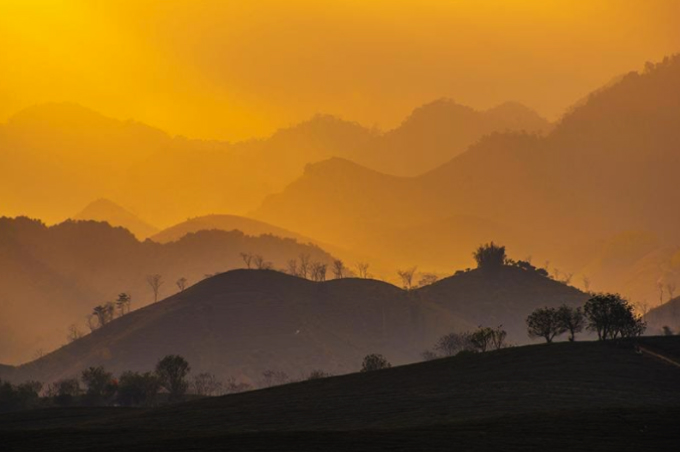10 HIGHLIGHTS OF VIETNAM
inspirational travel stories
Preparing a trip well is first and foremost about learning about the activities offered by the destination you want to visit.
With AsiaMyWay, your local agency specializing in Southeast Asia for over 20 years, we have thought of you. Our local agent Ms Thuong, wishes to share the top of the highlights and the essential places not to be missed during your trip to the Land of the Dragon. A country full of surprises, with diverse influences: let yourself be guided between lush nature, singular architecture and ancestral traditions. To help you on your next trip to this charming and surprising country, we present today the ranking of the 10 must-see stages in Vietnam.


1 - Hanoi
If there is one unmissable stopover during your visit to Vietnam, it is its capital: Hanoi, « the city between the rivers ». This emblematic city of Vietnam stretches along the western bank of the Red River (Sông Hồng) and is undoubtedly one of the most captivating capitals in Southeast Asia. Surrounded by many lakes (Hoan Kiem, Western Lake, White Bamboo) and dotted with dozens of pagodas, Buddhist temples and other religious buildings, it is famous for the richness of its culture, a mixture of traditions and modernity, among influences from Southeast Asia, China and France. This thousand-year-old city will seduce you with its bewitching charm, its centuries-old architecture, or perhaps with the delights of its « Street Food ».




2 - Halong bay
If you are going to discover the Land of the Dragon, the mystical Halong Bay or Vịnh Hạ Long in Vietnamese (Dragon Descent) is an essential part of your stay! Located in the South China Sea, it is a natural marine water bay of more than 43 thousand hectares (1,500 km2, the largest marine karst in the world). The Halong site, a true symbol of the country, has 120km of coastline, a preserved natural marine panorama of 1,969 submerged karst islands, and an exceptional tropical ecosystem that is listed as a UNESCO World Heritage Site.
Embark on a boat to discover this wonder of nature!
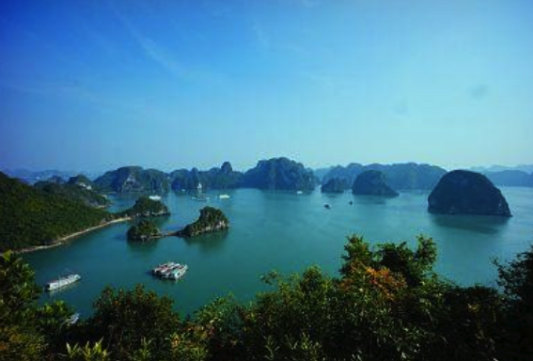



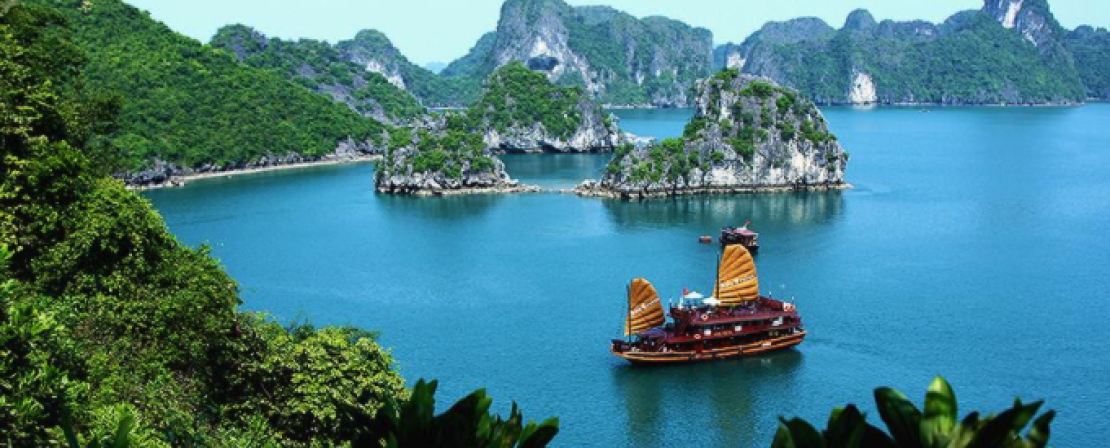

3 - sapa
This city in the far north of Vietnam, where you can still feel the French colonial influence, is located at an altitude of 1500m and enjoys a mild climate all year round. With a beautiful natural setting, you can admire incredible stepped rice fields as far as the eye can see, mountainous landscapes as well as waterfalls and bamboo forests, making it an ideal region for trekking. The charm of this region also lies in its great ethnic diversity. During your adventure, do not miss visiting the traditional villages, meet its inhabitants and discover their traditions. For the bravest, why not embark on the ascent of Mount Fansipan, « the roof of Indochina »! It culminates at 3143 meters and the fauna and flora are very diverse.


4 - hué
Hue, the former imperial capital of the country! Located in the centre of Vietnam, the city is crossed by the Song Huong River, which separates the city into two parts: in the north, the old city, in the south, the modern city. Hue was the political, cultural and religious centre of the country during the 19th century, and this influence is still felt today. It is an outstanding example of an eastern feudal capital. Plus, all the monuments of Hue are classified as UNESCO World Heritage Sites. The architecture of the city is absolutely incredible!
Discover the Citadel of Hue, the Imperial City and the Forbidden Purple City! Stop to visit the mausoleums and tombs of the kings, not to mention the city’s magnificent temples and pagodas.
5 - HOI AN
The city of Hoi An is an exceptionally well preserved example of a commercial port in Southeast Asia. Its buildings and street plan reflect the influences, indigenous and foreign, from China, Japan, France, etc., that have combined to produce this unique heritage site.
Hoi An is very famous for its old town, listed as a UNESCO World Heritage Site, which you can easily visit by bike to discover its unique architecture.
At night, Hoi An is lit by thousands of lanterns reflected in the river, offering a breath taking spectacle! So don’t miss out on a short night walk and why not take the opportunity to discover the market at night.
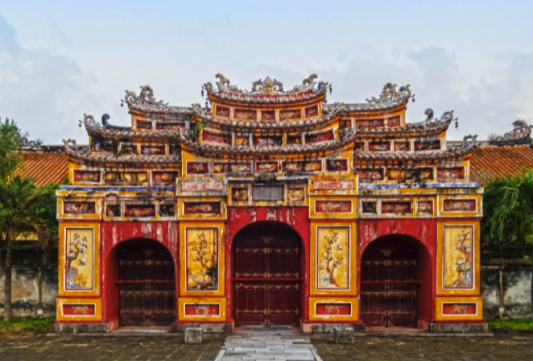

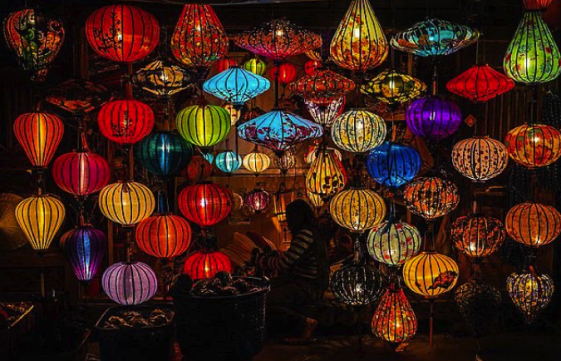

6 - My son
Not far from Hoi An, is the Sanctuary of My Son, a group of Cham temples whose spiritual roots link them to Hinduism. My Son is the most important Cham ruins in Vietnam. This sanctuary was the centre of Hinduism for the once powerful Cham kingdom that dominated central and southern Vietnam for centuries. The Sanctuary is made up of both dynastic and Shiva temples built at the end of the 4th century until the 13th century. For a long time, this site was the religious and political capital of the Kingdom of Champâ.
It is a place steeped in history, which has been classified as a UNESCO World Heritage Site since 1999.
7 - Ho-chi-minh city
Prey Nokor in Khmer became Saigon before then in 1975 becoming Ho-Chi-Minh City. It is now the largest city in the country and its economic lung, even before capital Hanoi, and therefore an essential stop on your trip to Vietnam! Located on the banks of the Saigon River and near the Mekong Delta, this city, which was originally a small Khmer fishing village, is now THE metropolis in the south of the country, covering an area of over 2000 km2. Visit the museums relating the terrible Vietnam War and discover the heritage in a very French colonial style!
8 - NINH BINH province
Ninh Binh is a province in northern Vietnam, 100km south of Hanoi. It houses the Trang An landscape complex, a UNESCO site, as well as Tam Coc. The terrestrial Halong Bay, so named because of its landscapes of karst peaks in the middle of the rice fields is typical of Ninh Binh : the sugar loaf-shaped mountains emerging from the water, similar to those of Hạ Long Bay is one of the destinations in Vietnam that you don’t want to miss! In addition to the breathtaking landscapes, there is no shortage of cultural and historical aspects. Tourist and historical sites, national parks, nature reserves, cathedrals, temples and pagodas, cruises between the mountains or a bike ride through villages and rice fields are so many ways to discover the beauty of this region!




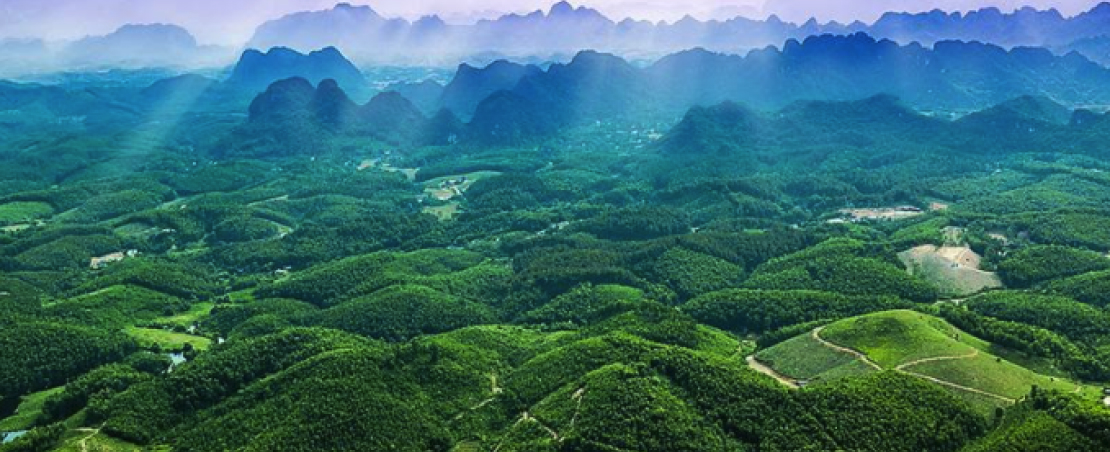

9 - can tho (MEKONG delta)
Can Tho is a city in southern Vietnam located in the Mekong Delta. Lush landscapes, immersion in local life, visits to the Khmer pagodas,… it is possible to walk, or cruise between the canals in a small pirogue but when you come to Can Tho it is especially for its floating market, one of the largest in the entire Mekong Delta!
You can also go down into the delta for a very… nautical discovery! Indeed, the main charm of the delta lies in its network of rivers and canals and in the whole life that takes place there. Here we don’t walk, we cruise…
10 - mai chau
South of Hanoi, Mai Chau is a small village in a green valley, populated by minority ethnic groups, at the foot of the Hoang Lien Mountains. It has a population of about 50,000, including seven ethnic minority groups – White Thais, Hmong, Zao, Muong, Tay and Hoa in Viet.
Hop on bicycles and discover the countryside, cross the villages and stop from time to time to meet the locals, discover their customs and traditions!
What to remember about Mai Chau? Its beauty, its tranquility and its atmosphere!
11 - BONUS : Phu quoc ISLAND !
When you imagine heavenly islands with white sandy beaches, surrounded by crystal clear waters, it is usually the Thai neighbour you think of first… But why not let yourself be tempted by Phu Quoc? Phu Quoc is the largest island in Vietnam, part of an archipelago of 22 islands, located in the extreme southwest of the country and dependent on the province of Kien Giang. It is the ideal place to relax at the end of your stay and enjoy the relaxing atmosphere of Southeast Asia.
Enjoy the beach, visit the pepper farms, taste seafood, take a boat trip or visit the Duong dong market!
